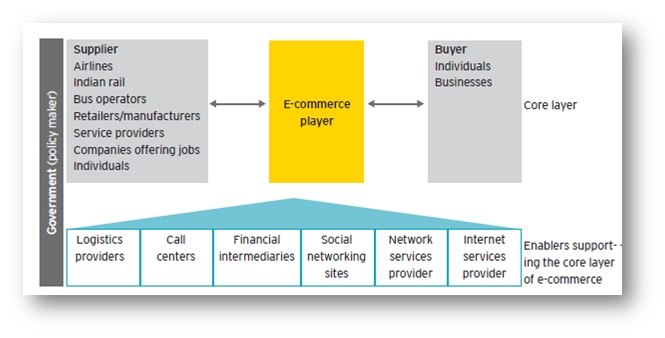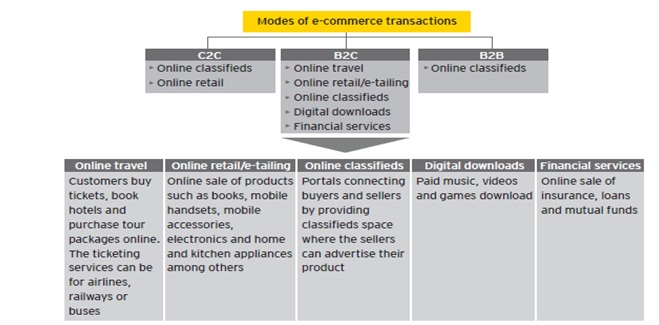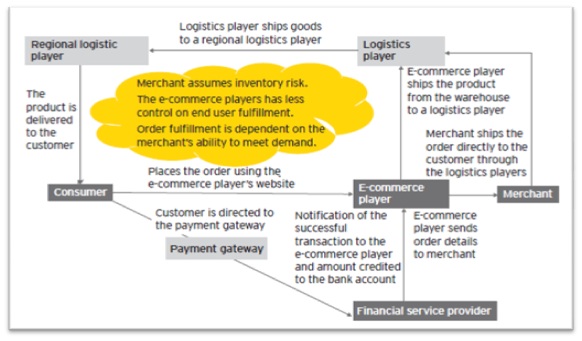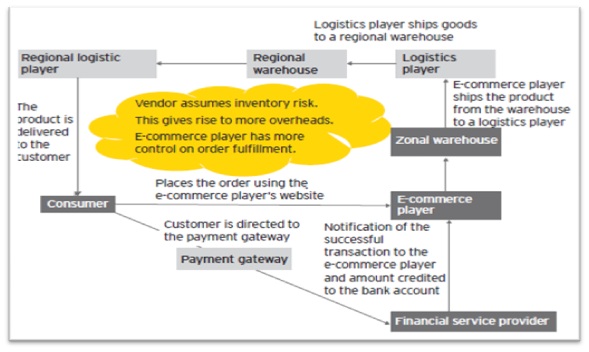 By Saif Alam Siddiqui, for Maeeshat,
By Saif Alam Siddiqui, for Maeeshat,
While it’s possible to make money online via a number of businesses — blogging, software, affiliate marketing, etc. Electronic Commerce is also one of the tools among them.
Introduction: Electronic commerce, frequently known as e-Commerce When I say “e-Commerce,” I mean a site that sells physical products to customers, is a type of industry where the buying and selling of products or services is conducted over electronic systems such as the Internet and other computer networks.
E-commerce draws on technologies such as mobile commerce, electronic funds transfer, supply chain management, Internet marketing, online transaction processing, electronic data interchange (EDI), inventory management systems, and automated data collection systems. Modern electronic commerce typically uses the World Wide Web at least at one point in the transaction’s life-cycle, although it may encompass a wider range of technologies such as e-mail, mobile devices, social media, and telephones as well. Electronic commerce is generally considered to be the sales aspect of e-business. It also consists of the exchange of data to facilitate the financing and payment aspects of business transactions. This is an effective and efficient way of communicating within an organization and one of the most effective and useful ways of conducting business.
e-commerce Market :
The e-Commerce market in India has enjoyed remarkable growth of almost 50% in the last five years. Although the trend of e-Commerce has been making rounds in India for 15 years, the appropriate ecosystem has now started to come on track. The considerable rise in the number of internet users, growing acceptability of online payments, the proliferation of internet-enabled devices and favorable demographics are the key factors driving the growth story of e-Commerce in the country.
The e-Commerce transactions can be segmented into three broad categories or modes, based on participants involved in the transaction.
Business-to-Consumer (B2C): The B2C market in India generates the bulk of revenues across the consumer-facing modes of e-Commerce. Furthermore, though online travel has typically held a major share of the B2C market, online retail is also growing rapidly and is expected to significantly increase its share.
Consumer-to-Consumer (C2C): India’s C2C market, though currently small, is set to grow with the entry of several players. These entrants are attracting VC investment. Their online portals are also garnering significant traffic. We expect the C2C segment to show rapid growth in coming years.
Business-to-Business (B2B): The most common users of B2B online classifieds are micro, small and medium enterprises (MSMEs). These small businesses lack the requisite financial resources and, therefore, find it difficult to market their products and services to potential clients through traditional media such as newspapers, banners and television. Trade through online B2B portals increases the visibility of MSMEs in the marketplace and helps them overcome barriers of time, communication and geography.
Key stakeholders
Multiple stakeholders are engaged in the e-Commerce sector.
The supplier list is set to grow, with a number of businesses and individuals looking to join the e-Commerce bandwagon. The customer/buyer has become the focal point for e-Commerce players. In this background, enablers such as logistics players and call centers are widening and evolving their offerings to align them with the strategies of e-Commerce players. To gain an edge and differentiation power, all the key stakeholders are engaging in innovation to provide a rich experience to their customers.
These stakeholders coordinate among each other to facilitate the three main flows in an e-Commerce transaction:
Product flow: movement of goods from suppliers to end consumers through e-Commerce and logistic players
Information flow: Information transmission of orders from customers and subsequent information flow of order status through the value chain
Monetary flow: payments from consumers to e-Commerce players and/or suppliers and vice-versa through financial intermediaries
Emerging business models in India
The number of users making online transactions has been on a rapid growth trajectory, and it is expected to grow from 22 million in 2012 to 38 million in 2015. Venture capitalists (VC) and private equity players have demonstrated their faith in the growth of e-Commerce in the country. This is amply substantiated by the significant increase in the total investments (US$305 million in 2011 against US$55 million in 2010). Online travel has traditionally been the largest e-Commerce sub-sector (by revenue) in India. Nevertheless, online retail is catching up fast and is expected to match online travel revenues by 2015.
e-Malls or e-Marketplaces: An electronic mall (e-Mall) or e-Marketplace provides a platform for merchants to set up virtual stores and sell their merchandise. Merchants frequently choose this option due to the advantages of reduced cost and the complexity of putting products up for sale on the web. They also benefit from leveraging websites (e-mall) traffic and user base, given the expectation that visiting other stores on the e-mall would lead to visits to their stores as well. Smaller merchants also look to leverage the brand name of the e-Marketplace, based on the premise that this would lead to increased trust and, therefore, readiness on customers’ behalf to buy products online. Larger merchants sell their products through these virtual stores, in addition to their own sales channels. Product pricing is not controlled by e-Commerce players and is decided by merchants. For the purpose of billing, merchants use the common payment gateway/method provided by the e-Commerce player hosting the platform. These marketplaces allow consumers to sell products directly to other consumers, either at a fixed price or through auctions. e-Commerce players allow monetary exchange through offering payment modes on their websites or proposing direct payment by buyers to sellers. Membership or subscription fees from sellers setting up virtual stores, and commission charges on transactions and advertising fees are various revenue sources for e-Commerce players.
There are two models evolved within e-Stores with respect to inventory management:
1.Consignment model:
Ships products directly from the vendor to the customer with no investments in warehouses and logistics e-Commerce in India is traditionally a low-entry barrier business, with most e-Commerce working on a consignment model based on the following principles:
• e-Commerce tie up with networks of merchants to source products.
• They then prepare web catalogs of products offered by their partner merchants.
• Once a customer order is received for any of the catalog items, a notification is sent to the merchant for its fulfillment.
• The merchant then supply the goods to the customer, and financial settlement is made between the e-Commerce and the merchant for the products sold.
2.Stock-and-sell model: Assumes inventory risk and invests in warehouses and logistics.
Analysis
The online retail segment has evolved and grown significantly over the past few years. Cash-on-delivery has been one of the key growth drivers and is touted to have accounted for 50% to 80% of online retail sales. Players have adopted new business models including stock-and-sell, consignment and group buying; however, concerns surrounding inventory management, location of warehouses and in-house logistics capabilities are posing teething issues. Classifieds, the earliest entrant in the e-Commerce space in India, is undergoing a shift in operational model from vertical to horizontal offering. Players now offer a gamut of services ranging from buying/selling cars to finding domestic help/babysitter. To ensure that e-Commerce maintains the steam that it has gained in recent years, the government needs to focus on the regulatory front. Unlike many other countries, India still does not have dedicated e-Commerce laws. The Sales Tax laws need to be revised, as they are posing issues for online retailers while they decide warehouse location. e-Commerce is set to continue on its growth path on the back of the stabilization of the ecosystem and interest demonstrated by VC players, combined with support from the Government of India.
Author to be contacted at Saifalam89@gmail.com









0 Comments